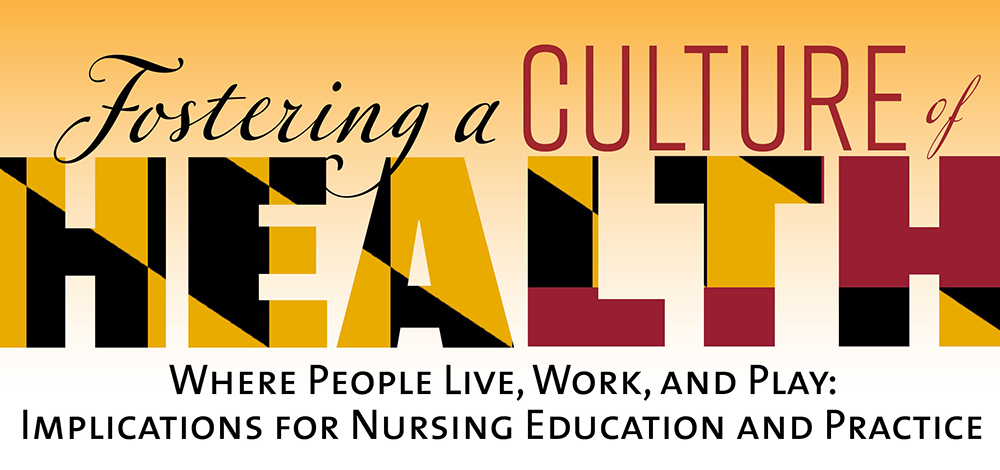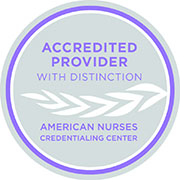1. Development and Implementation of a Collaborative Nurse Practitioner Clinical Training Program
Bimbola Akintade, PhD, MBA, MHA, ACNP-BC, CCRN
Shannon Idzik, DNP, ANP-BC, FAANP, FAAN
Katherine Fornili, DNP, MPH, RN, CARN, FIAAN
Kathryn Lothschuetz Montgomery, PhD, RN, NEA-BC
Bridgitte C. Gourley, DNP, CRNP
Keisha Indenbaum-Bates, MS, RN
University of Maryland School of Nursing
2. What are Peer-Assisted Study Sessions (PASS) and How Can They Increase Nursing Students' Study Skills and Improve Grades While Decreasing Attrition Rates?
Yvonne Azeltine, BSN, RN
Brenda Mister, EdD, MS, RN
Wor-Wic Community College
3. Outcomes of NSP II Faculty Recruitment and Retention Programs
Peggy Daw, DNP, RN-BC
Maryland Higher Education Commission
4. Increasing the Number of Baccalaureate Graduates Through the Deliberate Imple
Judith Feustle, ScD, RN
Stevenson University
5. Thinking Skills Students Need to Excel in the Clinical Setting
Jennifer Fritzges, DNP, RN, CNE, CNEcl
Nancy Perry, DNP, RN, CNE
Carroll Community College
6. The Value of DNP Projects Through Hospital Partnerships
Bridgitte Gourley, DNP, FNP-BC
Cathaleen Ley, PhD
University of Maryland School of Nursing
7. Characteristics and Effects of Mobile Technology-Integrated Worksite Health Promotion Programs on Body Weight and Composition: A Systematic Review
Myeunghee Han, MS, RN
Carla Storr, ScD, MPH
Kelly Doran, PhD, RN
University of Maryland School of Nursing
8. LeadNursingForward.org: Preliminary Evaluation of a Web Resource to Address the Nurse Educator Shortage
Abigail Johnson, BA
Lisa Seldomridge, PhD, RN, CNE
Judith Jarosinski, PhD, RN
Kayna Freda, EdD, RN, CMSRN
Salisbury University School of Nursing
9. Increasing Minority Nursing Student Academic Success Through Faculty Mentorship
Pawn Johnson-Hunter, MS, RN
Maija Anderson, DNP, APRN
Morgan State University
10. Impact of Length of Stay on Recovery Measures Among Homeless Men in Faith Based Addiction Treatment
Mary Lashley, PhD
Towson University
11. Promoting a Healthy Collegial Work Environment in Academia
Jennette Logan, DNP, RN
Maija Anderson, DNP, RN, CNE
Malliga Jambulingam, PhD, RN
Morgan State University
12. Nursing Pathways to Higher Education: High School to Associate to Bachelor Degree in Nursing
Kaycee Rump, MSN
Anne Arundel Community College
13. Create a Culture of Lifelong Learning
Laura Schenk, MS, RN, CNE
Harford Community College and Cecil College
14. The Post Doctorate Psychiatric Mental Health Nurse Practitioner Certificate
Debra Scrandis, PhD, FNP-BC, FPMHNP-BC
Charon Burda, DNP
University of Maryland School of Nursing
15. Nursing Dual Enrollment Program (N-DEP)
Joice Stokes-James, MPA, BSN, RN
Maija Anderson, DNP, RN, CNE
Morgan State University
Vanessa Fahie, PhD, RN
University of Maryland School of Nursing
16. Building Capacity to Increase RN Workforce in Maryland: P-TECH Nursing Pathw
Nina Trocky, DNP, RN, NE-BC, CNE
Linda Murray, DNP, CRNP-Ped
University of Maryland School of Nursing
17. Video Monitoring Technology as the Fall Prevention
Yelena Tuerk, MBA, MSN, RN, NEA-BC
University of Maryland Rehabilitation & Orthopaedic Institute
18. Training Nurse Faculty for the Future: Students’ Perspectives and Lessons Le
Kyra Waligora, BSN, RN
Athena Ford, PHN, RN
Nadia Andrade, MSN, AGACNP-BC
Hae-Ra Han, PhD, RN, FAAN
Johns Hopkins School of Nursing
19. Maryland Nursing Workforce Center
Rebecca Wiseman, PhD, RN
University of Maryland School of Nursing
20. ATB: Helping to Create a Nursing Workforce Prepared to Advance a Culture of Health
Karen Wons, MS, RN, CNE
Community College of Baltimore County


 Registration costs for this year’s summit are being subsidized by the Maryland Nursing Workforce Center, a Nurse Support Program II-funded initiative.
Registration costs for this year’s summit are being subsidized by the Maryland Nursing Workforce Center, a Nurse Support Program II-funded initiative. Nurses may receive six contact hours upon successful completion of this continuing nursing education (CE) activity and $30 payment. Successful completion is demonstrated by attending the entire summit and submitting a completed program evaluation and verification of attendance forms. Partial credit is not provided. Participants will receive a CE certificate via email from UMSON within four weeks after submitting their request, verification form, and completing the online evaluation. All requests for CE must be received within 30 days of the conference.
Nurses may receive six contact hours upon successful completion of this continuing nursing education (CE) activity and $30 payment. Successful completion is demonstrated by attending the entire summit and submitting a completed program evaluation and verification of attendance forms. Partial credit is not provided. Participants will receive a CE certificate via email from UMSON within four weeks after submitting their request, verification form, and completing the online evaluation. All requests for CE must be received within 30 days of the conference.